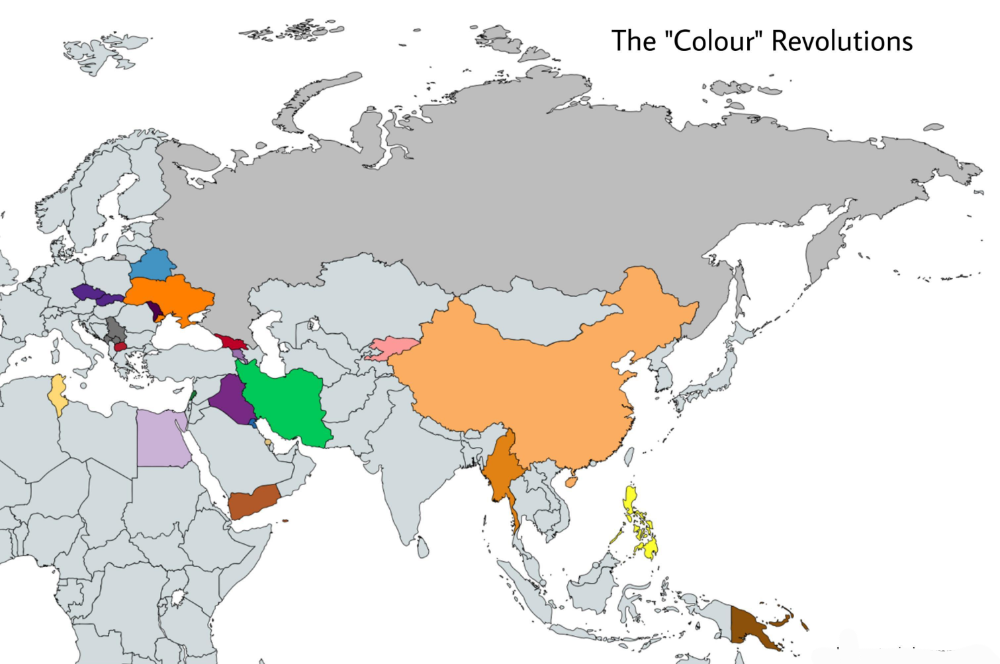
Contents
CT 1. Overview of AI Influences on Architectural Design
CT 2. WHAT A I IS GOOD AT
CT 3. WHERE TO START
CT 4. CHARACTERISTICS OF AI PROJECTS
CT 5. SOME AI DRIVEN PROJECT IDEAS SPECIFIC TO AEC
Glossary
AEC - architecture, engineering, and construction
Organisational tiers - governing managing operating supporting.
3Es - economy, efficiency, and effectiveness (inputs, transformation, outputs in nusiness processes).
Summary
Where to look for AI projects that improve core operating business processes in the architecture profession.
Sectors experiencing demand: residential and healthcare.
Skills: Firms are increasingly looking for architects skilled in technologies such as Building Information Modelling (BIM), and sustainable design certifications like LEED are becoming more critical.
Change management AI projects:
Potential benefits of integrating AI within the operating tier of architectural projects, focusing on the 3Es or enhancing the economy, efficiency, and effectiveness of core operating business processes:
1. Automated Site Monitoring
- Efficiency: Automating the monitoring process reduces manual efforts and increases the speed of data collection and analysis. Tools like OpenSpace improve the efficiency of site monitoring by providing real-time, immersive visual documentation and progress tracking, actual to planned.
2. AI-Enhanced Project Management
- Effectiveness: Integrating AI to enhance project management tools helps in effectively managing projects to ensure they are delivered on time and within budget. Features like real-time data tracking and advanced risk insights increase the project's effectiveness.
3. Safety Monitoring
- Effectiveness: Utilising AI to monitor safety transforms how safety protocols are enforced on construction sites. Systems that detect non-compliance and unsafe behaviours ensure effective adherence to safety standards, thus reducing the risk of accidents.
4. Quality Control
- Effectiveness: AI tools that compare real-time construction against BIM models ensure the final construction meets the planned specifications effectively. This reduces the need for costly reworks and ensures quality standards are met effectively.
5. Resource Efficiency in Construction
- Economy: Optimising the supply chain with AI aids in minimising material waste and improving coordination. This approach promotes economical use of resources, especially in modular construction where material and time savings are crucial.
6. Operational Efficiency through AI
- Efficiency: Employing robots and AI algorithms for repetitive tasks enhances operational efficiency. These technologies streamline processes such as bricklaying and concrete pouring, thereby speeding up the construction process and freeing up human workers for more complex tasks.
CT 1. AI IN AEC
The incorporation of AI into architectural design is transforming the profession in several significant ways. AI tools are not only optimising design workflows but are also creating new opportunities for innovation and efficiency in the planning and construction of the built environment.
Here’s a summary of the primary changes:
1. Automated Design and Planning
AI-Driven Design Tools: AI is increasingly used to automate routine tasks such as preliminary design drafts and to optimise building layouts based on multiple parameters like light, space utilisation, and materials.
Efficiency and Speed: These tools can generate multiple design variations more quickly than traditional methods, allowing architects to explore a broader range of options and refine designs more effectively.
2. Enhanced Simulation and Modelling
Real-time Simulations: AI enables more complex simulations of how buildings will perform under various conditions, such as changing weather patterns and different lighting scenarios, enhancing the ability to make data-driven decisions.
Virtual Reality (VR) and Augmented Reality (AR): These technologies, combined with AI, allow architects and clients to walk through and interact with 3D models of projects before any actual construction begins.
3. Sustainability and Resource Management
Optimising Materials and Energy Use: AI can analyse building materials and energy efficiency to create more sustainable designs. This includes the selection of materials for sustainability and the design of buildings to reduce energy consumption.
Predictive Maintenance: AI algorithms can predict when parts of a building will need maintenance or replacement, which is crucial for long-term building management and sustainability.
4. Client Interaction and Customisation
Personalised Design Solutions: AI can help tailor designs to individual preferences and functional needs by learning from vast datasets of design elements and user feedback.
Enhanced Client Engagement: Tools like AI-driven chatbots can provide instant responses to client inquiries and facilitate more efficient communication throughout the design process.
5. Construction Process Optimisation
Robotics and Automation: In the construction phase, AI-driven robots and automated systems can follow the architect's plans to execute tasks, potentially reducing the time and labour costs associated with building.
Quality Control: AI can also monitor construction quality and compliance with designs, ensuring that the executed work stays true to the architect's vision.
References to AI in Architecture on YouTube
Here are a couple of YouTube presentations on how AI is influencing architecture and design:
1. "Artificial Intelligence and Architecture: Designing a Better World": This presentation explores how AI tools are being integrated into the design process, with examples and discussing the implications for future architectural practices.
2. "The Future of Architecture with AI": This video discusses the potential for AI in architecture to revolutionise how buildings are designed, constructed, and maintained, with experts sharing their views and predictions.
These presentations give a broad perspective on the transformative role AI is playing in architecture, with theoretical insights and practical examples.
CT 2. WHERE TO START
Don’t begin with tools and apps. Begin with what you’re trying to accomplish
Begin with what the client trying to accomplish and what would help the firm bring greater economy, efficiency and effectiveness into its daily content operations.
Identify all content-related tasks. Create a list of all content development tasks and think about which of these tasks (especially repetitive, low-value tasks) could be easily automated, allowing your team to focus on more meaningful, creative work.
Prioritise tools best suited to help with your specific needs. Many tools have overlapping features, and there are many one-point tools. Prioritize tools that are multifunctional and can help you with the most important or the most frequent activities.
Review your existing marketing technology stack. Before you invest in something completely new, check what you already have. Salesforce, HubSpot, MailChimp, OpenAsset, Microsoft Office, Adobe Creative Suite, Canva, and most other technologies have already integrated AI features within their existing platforms.
With a clear picture of what you’re trying to accomplish, it will be easier to zoom in on the tools that could help you do that.
Finally, you have to allocate time – whether it’s an hour a day or an hour a week – to research, test and learn these new tools.
CT 3. WHAT GEN AI IS GOOD AT
AI is very good at research, brainstorming, production and productivity. Specific to content development and content management, AI tools can:
• Help with topic research
• Quickly process and analyse research data
• Generate ideas and create outlines
• Brainstorm headlines and subject lines
• Suggest process optimisations
• Transcribe and translate
• Create summaries, extract key points, rewrite and repurpose previously created content
• Edit images, text, audio and video
• Transform static content into more engaging and compelling pieces ("narratives") with the use of text-to-video or text-to-image tools
• AI tools can also help write “functional content”– meeting summaries and takeaways, routine and repetitive email communications, organising notes into outlines, creating descriptions and other similar types of content.
• AI can take as far as the first draft, but creative or expertise-based writing is up to you.
CT 4. CHARACTERISTICS OF AI PROJECTS
How to identify potential AI projects.
Cost, quality, time. If you are looking for apprenticeship type projects or planning to open a small business offering AI services to the AEC architecture, engineering, and construction sector, highlighting projects that can quickly impact the bottom line is really important.
The 3 Es: When thinking of areas for improvement, split the process into three phrases: the 3Es, inputs transform outputs. - economy, efficiency and effectiveness.
Economy is about purchasing and buying at the best value for money.
Efficiency is about minimising the cost of transforming inputs into outputs, and
Effectiveness is customer satisfaction with the result with the output.
Just think about these three steps in the business process. And how you can make changes with AI that will hit the bottom line.This is how to define and sell your project.
Start at the end. Don’t begin with tools and apps. Begin with what your client is trying to accomplish - thi k "business bottom line". This is really important - firms are in business to make money, not to try out your technology. Begin with what the client is trying to accomplish and what would help the firm bring greater economy, efficiency and effectiveness into its daily content operations.
Identify all content-related tasks. Create a list of all content development tasks and think about which of these tasks (especially repetitive, low-value tasks) could be easily automated, allowing the client to focus on more meaningful, creative work.
Prioritise AI tools best suited to help with the business's specific needs. Many tools have overlapping features, and there are many one-point tools. Prioritise tools that are multi-functional and can help you with the most important or the most frequent activities.
Review the existing tools and technology stack. Before asking the client to invest in something completely new, check what they already have. For example, Salesforce, HubSpot, MailChimp, OpenAsset, Microsoft Office, Adobe Creative Suite, Canva, and most other technologies have already integrated AI features within their existing platforms.
With a clear picture of what they’re trying to accomplish in their business, it will be easier to zoom in on the tools that could help them do that.
Remember that you yourself have to allocate preparation time – whether it’s an hour a day or an hour a week – to research, test and learn the technology and these new tools.
CT 5. SOME AI DRIVEN PROJECT IDEAS SPECIFIC TO AEC
Specific AI projects in the AEC space that will cut costs, shorten delivery times, improve quality and enhance customer satisfaction.
Here are ideas that can be easily integrated into an AEC firm to enhance the 3Es, and notably efficiency, safety, and profitability:
1. Automated Site Monitoring: Using AI to automate the capture and analysis of construction sites can significantly reduce manual monitoring efforts. Tools like OpenSpace can map 360-degree images to project plans automatically, providing immersive visual documentation and real-time progress tracking (Unite.AI).
2. AI-Enhanced Project Management: Platforms like Foresight integrate AI to optimize project management tools such as Primavera P6 and Microsoft Project. This includes real-time data tracking, advanced risk insights, and enhanced schedule visibility, which help deliver projects on time and within budget (Unite.AI).
3. Safety Monitoring: AI can enhance safety by analyzing video feeds in real time to detect non-compliance and unsafe behaviors. Systems like viAct offer alert mechanisms for unsafe acts or entry into restricted areas, significantly reducing the risk of accidents (Apiko.com).
4. Quality Control: AI-driven tools can compare real-time construction against BIM (Building Information Modeling) models to identify discrepancies. This ensures that the actual construction adheres closely to the planned specifications and reduces costly rework (Apiko.com).
5. Resource Efficiency in Construction: Leveraging AI for optimizing the supply chain can lead to reduced material waste and better coordination. This is particularly effective in modular construction where precision and timing are critical (McKinsey.com).
6. Operational Efficiency through AI: Robots and AI algorithms can perform repetitive tasks such as bricklaying or pouring concrete, thereby speeding up the construction process and freeing up human workers for more complex tasks (Trimble Inc.).
These applications not only streamline operations but also open avenues for cost reduction and quality enhancement in projects. Each of these tools and strategies can be tailored to meet specific client needs, providing a robust portfolio of services for your AI business in the AEC sector.






















